Minh Mang Mausoleum
- Tuesday - 11/02/2020 16:19
- Close page
Minh Mang tomb is a standard architectural complex consisting of 40 big and small constructions which include palaces, temple, pavilions, etc., designed on symmetric axis along the Dai Hong gate outside to the foot of La Thanh behind the Emperor’s tomb.
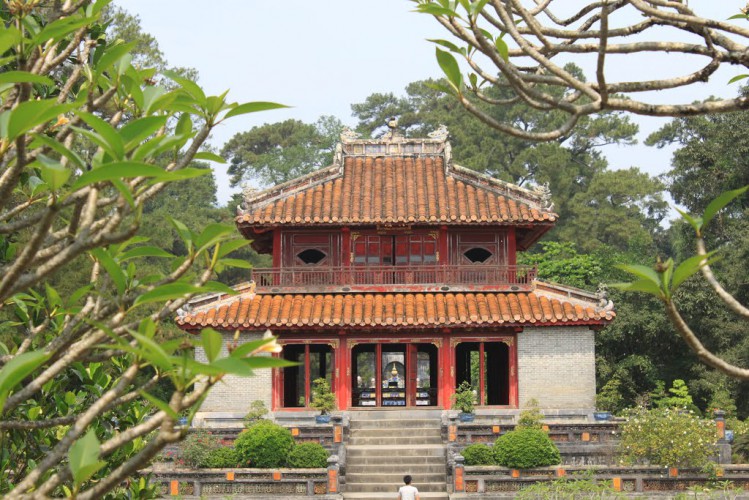
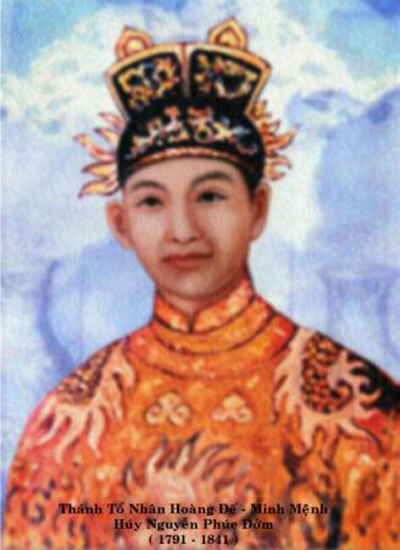
Born Nguyễn Phúc Đảm, also known as Nguyễn Phúc Kiểu, in 1791, Minh Mang (1791 - 1841) is the fourth son of Gia Long. At the death of Gia Long in 1820, he succeed to the throne as the second king of the Nguyen dynasty. During his reign (1820-1841), although he decided some erroneous or limited policies, he is recognized as the best King of the Nguyen dynasty with important merits in the reform of the royal administration, army, education, economy, new techniques, diplomatic relations, etc..
Architecture
Located on Cam Ke Mountain, 12 km from Hue, the mausoleum of Minh Mang or Hieu Lang is a little set back downstream from Gia Long’s tomb, at the crossroads of Bang Lang, the confluence of two rivers, Ta Trach and Huu Trach, which form the Perfume River.
Covering an area of 18 hectares, Hieu Lang includes 40 architectural monuments (palaces, pavilions, temples, etc.). They are arranged on a symmetrical axis called Than Dao, running from the Dai Hong Mon Gate to the foot of the La Wall behind the Minh Mang's tomb.
First of all, the visitors enter the Dai Hong Gate that measures 9 m high and 12 m wide, with three entrances that the center opened only once, to let the royal coffin pass through. The 24 roofs were decorated with motifs of carps turning into dragons and dragon in the clouds.
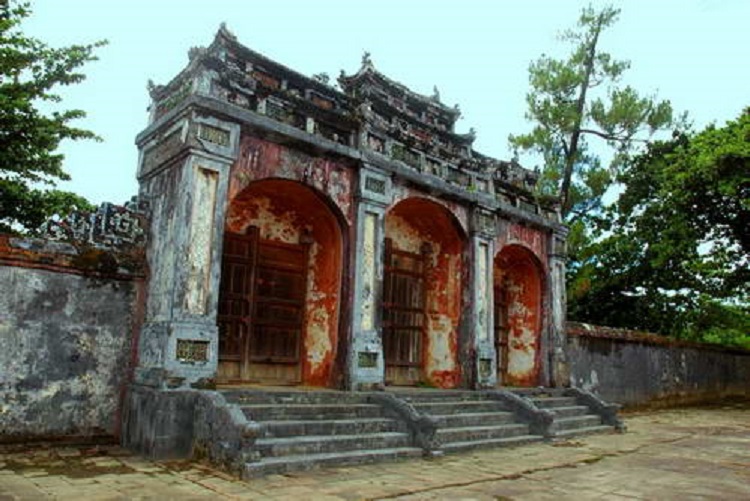
Next is the Bai Dinh courtyard that was paved with bricks from Bat Trang. There are two rows of stone statues, including mandarins, elephants, and horses. Then, the Bi Dinh Pavilion is located on the Phung Than Hill, there is the stele, that is 3.1 m high, 1.6 m wide, known as Thanh Duc Than Cong, on which an article inscribed with the biography and merits of Minh Mang, written by his son – King Thieu Tri.
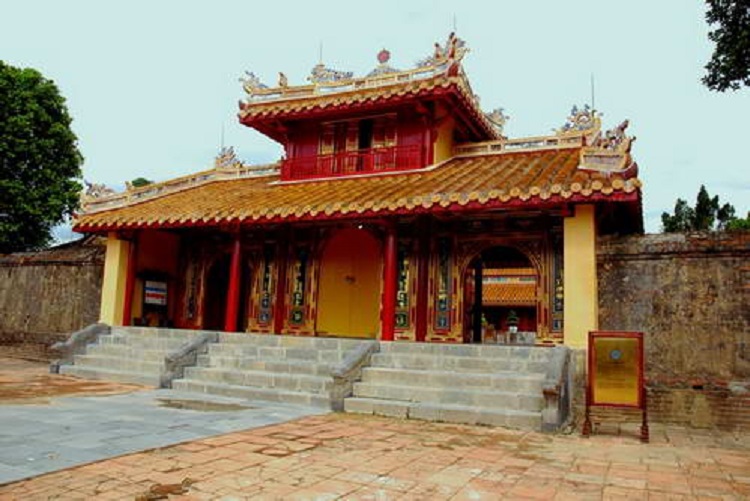
Hien Duc Gate opens the worshiping area of the king, built on a square piece of land symbolizing the ground (once upon a time they believed that sky was round and the earth was square). The visitors come to the Sung An Temple in which King Minh Mang and his queen Ho Thi Hoa are worshipped. Some small edifices located around the Sung An temple like small planets revolving around the sun.
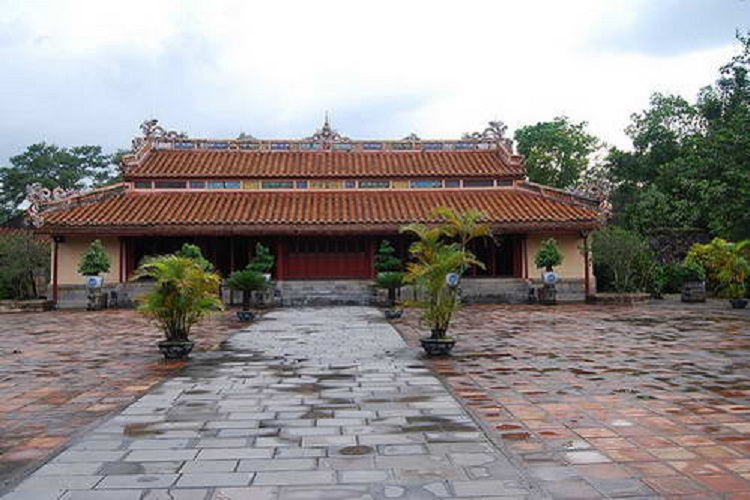
The Hoang Thach Gate ends the worship area, opens a site very picturesque, zen and calm, that was surrounded by fragrant flowers. The Minh Lau Pavilion is built on the Tam Tai Hill, in the center of the Trung Minh Lake. Three bridges of Ta Phu, Trung Dao, and Huu Bat connect the border and the pavilion, which is a square work, two floors, eight roofs, symbols the Eastern philosophy.
The Tan Nguyet Lake (New Moon Lake) is crescent-shaped, symbolizes Yin and embraced by the Buu Wall, which symbolizes Yang, this structure represents the theory of Yin and Yang, the powers of animation which preside over the dynamism of nature and the transformation of beings and things. Then we walk on the bridge stone of 333 steps to cross the lake and arrive at the king's tomb at the top of the Khai Trach Hill.
The mausoleum of Minh Mang is a majestic symmetrical architecture, in harmony with nature. It represents his talent, his character and the influences of Confucianism on him. Besides the Imperial City, the Pagoda of Celestial Lady, the mausoleums of Tu Duc, and Khai Dinh, Minh Mang's mausoleum is undoubtedly a must-see destination for visitors to Hue.
Note: The above article reprinted at the website or other media sources not specify the source http://www.ngoisaoso.vn is copyright infringement